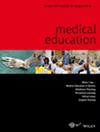Pigeonholes and Johari windows: Rehumanising ethnicity categorisation in health care
Abstract
Categorisation Can Bring Clarity
Categorisation is just what we do in health care. It allows for definitions to be shared, so conditions can be targeted and treatments standardised. It allows for concepts and constructs to become testable objects of research. And, with the increasing push for diversity and inclusion, it allows for disparities to be identified to evidence progress and enable accountability.
Categorisation Can Also Confound
But could these distinctions be doing as much harm as good? In this article, I review work from the field of inclusive education, focusing particularly on “awarding gaps” and “differential attainment” (i.e. differences in the proportions of degrees with higher grades awarded to some groups of learners compared with others). In doing so, I draw attention to the paradox inherent in empirically studying these topics: increasing recognition of unfairness is dependent on categorising individuals into groups of students, which risks reinforcing negative, reductive associations and alienating those who cannot relate to their designation.
Categorisation Requires Care
Using the case of ethnicity categorisation (and mixed ethnicity categories in particular), I use this paper to explore this unwelcome impact of categorisation in more detail. I acknowledge how difficult it would be to overhaul our system of categorisation and finish with thoughts on how we might mitigate its impact in our practice.

 求助内容:
求助内容: 应助结果提醒方式:
应助结果提醒方式:


